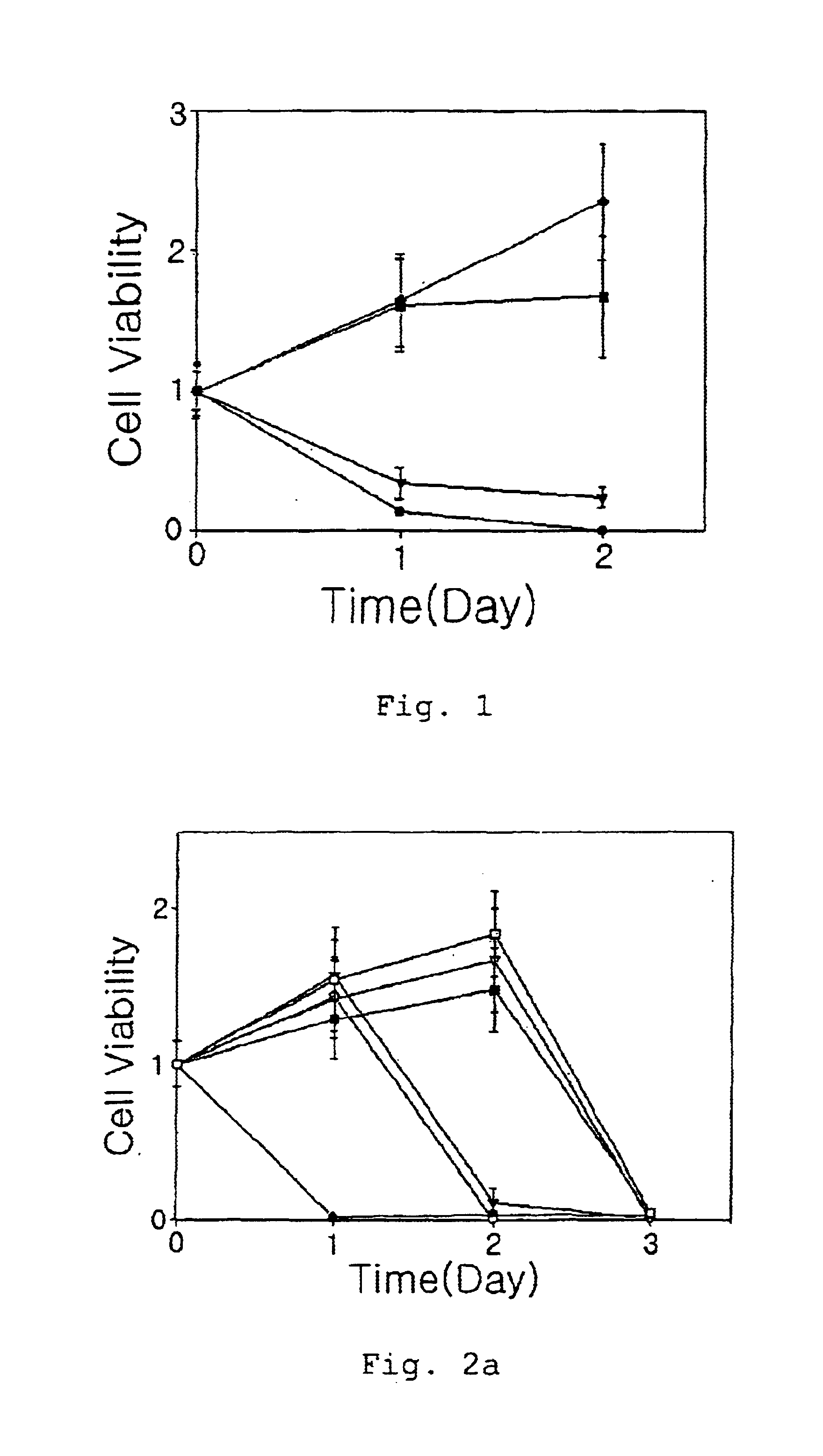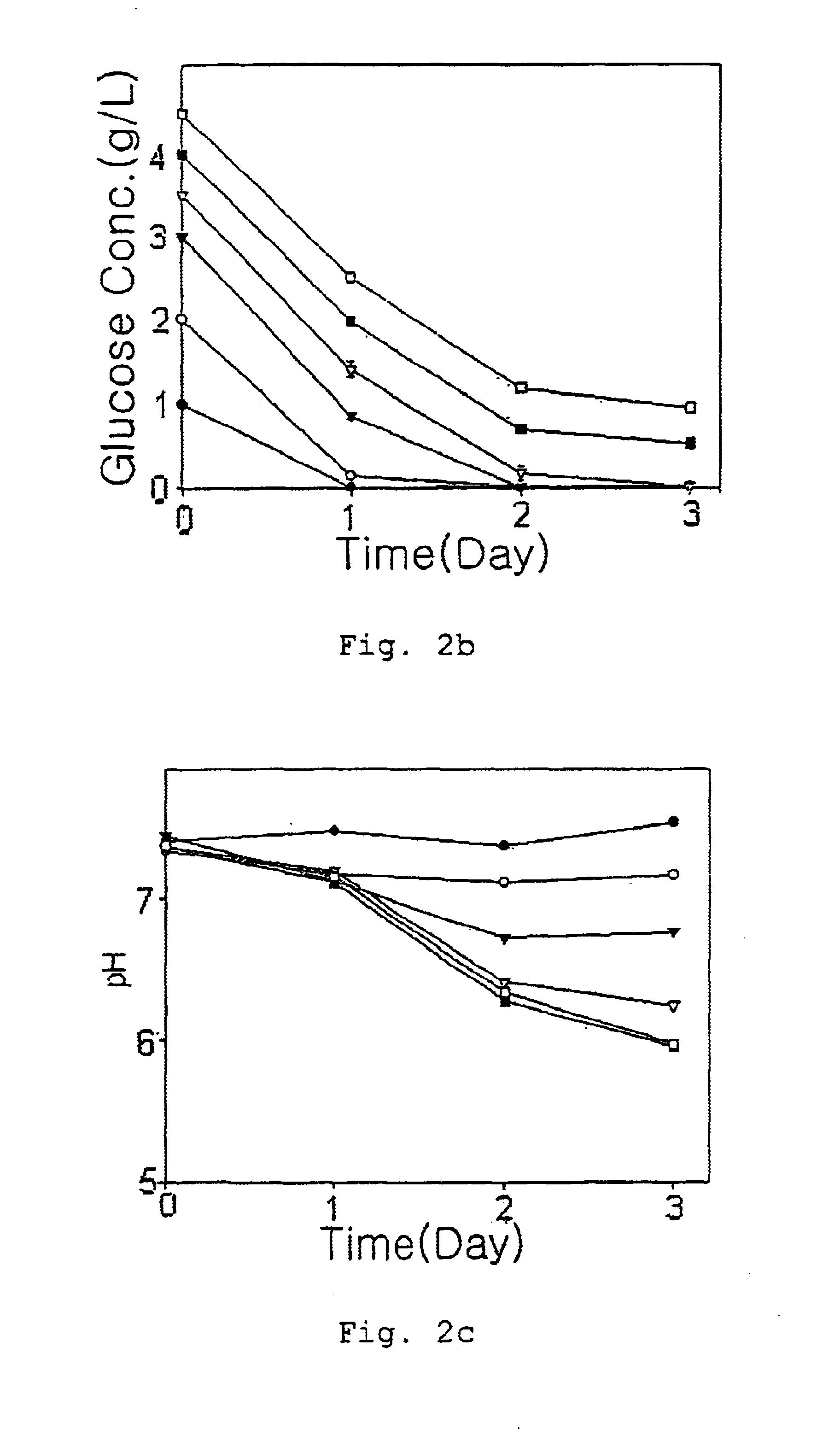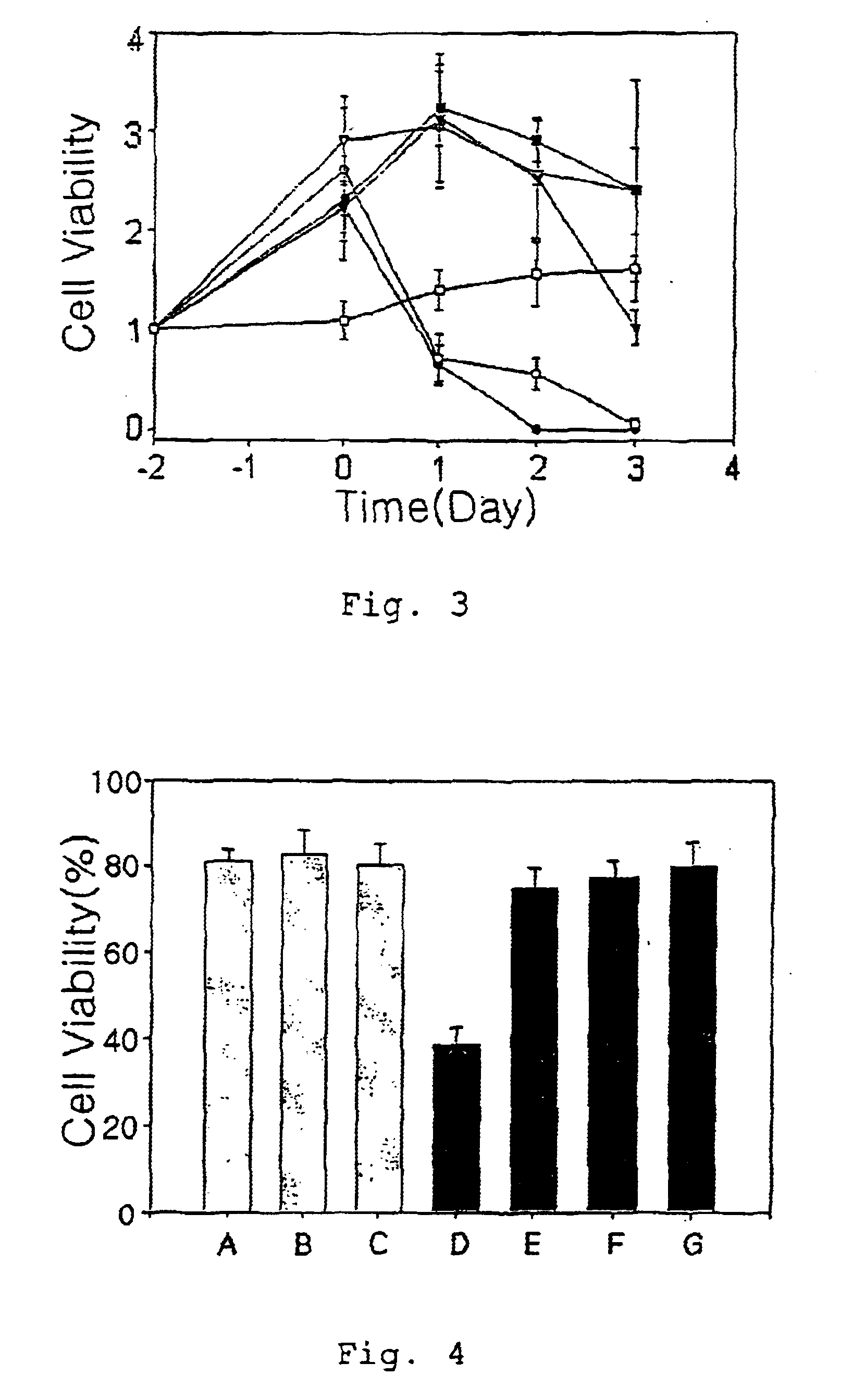Therapeutic agent for ischemia which inhibits apoptosis under ischemic condition
a technology of ischemia and apoptosis, which is applied in the direction of biocide, drug composition, cardiovascular disorder, etc., can solve the problems of not being able to alleviate ischemic injury without adequate oxygen, and not being able to achieve the effect of reducing the risk of strok
- Summary
- Abstract
- Description
- Claims
- Application Information
AI Technical Summary
Problems solved by technology
Method used
Image
Examples
example 2
ility depending on glucose concentration HepG2 cells were cultured analogously as in Example 1 except for 1% (v / v) oxygen and varied glucose concentrations from 1 to 4.5 g / L. Then, cell viability, changes in glucose concentration and changes in pH with time were measured, respectively(see: FIGS. 2a, 2b and 2c). FIG. 2a shows cell viability with culture time, 2b shows changes in glucose concentration with time, and 2c shows changes in pH with time, where (.circle-solid.) indicates 1 g / L glucose, (.largecircle.) indicates 2 g / L glucose, (.tangle-soliddn.) indicates 3 g / L glucose, (.gradient.) indicates 3.5 g / L glucose, (.tangle-soliddn.) indicates 4 g / L glucose, and (.quadrature.) indicates 4.5 g / L glucose, respectively. As shown in FIGS. 2a-2c, it was demonstrated that cells were died as a result of depletion of glucose or lowering of pH under a low oxygen condition.
example 3
ility under various geneticin concentrations
HepG2 cells were cultured for 2 days in the same manner as in Example 1, and then, the maximum concentration of geneticin at which HepG2 cells can survive was determined by replacing the culture medium with a fresh medium containing 0-1000 .mu.g / ml geneticin, an aminoglycoside antibiotic under an environment of 1%(v / v) oxygen, respectively(see: FIG. 3). FIG. 3 is a graph showing the cell viability at various geneticin concentrations, where geneticin was added at a concentration of 0 .mu.g / ml (.circle-solid.), 1 .mu.g / ml (.largecircle.), 3 .mu.g / ml (.tangle-soliddn.), 10 .mu.g / ml (.gradient.), 100 .mu.g / ml (.box-solid.), and 1000 .mu.g / ml (.quadrature.), respectively. As shown in FIG. 3, it was clealy demonstrated that cells treated with 10-100 .mu.g / ml genticin were viable for a certain period of time under an environment of 1% (v / v) oxygen.
example 4
f various antibiotics on cell viability
In order to screen antibiotics which have similar effect to geneticin but have different chemical structure, HepG2(Human hepatoma cell line, ATCC HB 8065) cells were grown under the same condition described in Example 1, followed by replacing the medium with fresh medium proper for test conditions described below, and then, cell viabilities under various conditions were compared after 2 days of incubation. Test groups were divided as follows depending on test conditions: test group A with 21% (v / v) oxygen and 4.5 / L glucose, test group B with 21(v / v) oxygen and 1 g / L glucose, test group C with 1% (v / v) oxygen and 4.5 / L glucose, test group D with 1%(v / v) oxygen and 1 g / L glucose, test group E with aminoglycoside antibiotic of geneticin (10 .mu.g / ml) treated test group D, test group F with quinolone antibiotic of ofloxacin test group D, and test group G with antibiotic of doxycycline (0.1 .mu.g / ml) treated test group D (see: FIG. 4). FIG. 4 is a g...
PUM
| Property | Measurement | Unit |
|---|---|---|
| concentration | aaaaa | aaaaa |
| concentrations | aaaaa | aaaaa |
| concentration | aaaaa | aaaaa |
Abstract
Description
Claims
Application Information
 Login to View More
Login to View More - R&D
- Intellectual Property
- Life Sciences
- Materials
- Tech Scout
- Unparalleled Data Quality
- Higher Quality Content
- 60% Fewer Hallucinations
Browse by: Latest US Patents, China's latest patents, Technical Efficacy Thesaurus, Application Domain, Technology Topic, Popular Technical Reports.
© 2025 PatSnap. All rights reserved.Legal|Privacy policy|Modern Slavery Act Transparency Statement|Sitemap|About US| Contact US: help@patsnap.com



